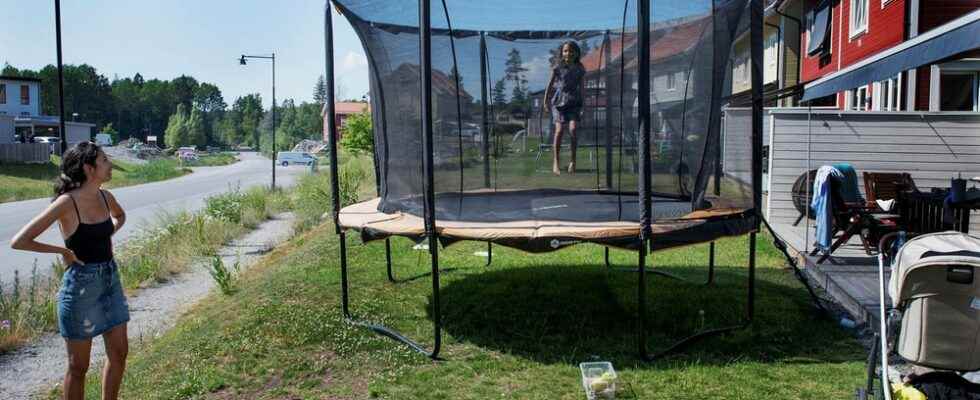Maddy Hedman lives with her husband and their three children, 12, 7 and 5 years old, in a terraced house. They moved here six years ago. The family has noticed the more expensive everyday life.
– We were at Ica Maxi today and shopped for what felt like nothing for SEK 800. We wanted some ice cream and coffee for the afternoon, says Maddy Hedman.
After being at home with the children, studying and working as a doula (support for women giving birth), Maddy Hedman will start working as a developer this autumn. Then the family gets two full-time salaries to live on. The husband works as a cleaning worker (“garbage man”). Higher interest rates and prices in general, they expect to manage.
– We have lived frugally for a while so I think we go plus or minus zero when I start working.
They recently negotiated a lower variable mortgage rate with the bank, but are now planning for the longer term.
– We thought we would try to tie the interest rate. It does not go down directly, says Maddy Hedman.
The family has noticed that everyday shopping in the grocery store has become more expensive, but some special items are difficult to point out.
– It is noticeable in everything possible. Vegetables, breakfast and toilet paper – these have gone up in price. And it’s hard to stop buying toilet paper.
Meat and chicken, which can usually make the food bag cost more, they buy separately from a farm.
– It is not such goods that make the price go away with the usual action, but the meat has also become more expensive.
To reduce costs, the family now thinks once more when making purchasing decisions.
– We’re thinking. Do we need this? Shall we buy it right now? We have reduced our everyday luxury.
The family has a car but is trying to reduce travel due to the higher fuel prices. Now use the box bike as much as possible.
– Before we could take the car a bit everywhere, now we go more often. It is good for the environment to think a little.
The sunny afternoon are the neighbors visiting the garden. There is full activity on the trampoline.
– We are very privileged, but it is clear that it feels, says Maddy Hedman.
Gislain Alongo lives in a two-room apartment with his wife and their three-month-old daughter. The couple moved to the area three years ago.
– I feel good, it’s calm and nice here, not so many people.
They live in tenancies and are therefore not affected by higher mortgage rates, but have noticed that other things have become more expensive.
– We usually buy food online, it is noticeable that it is not the same prices as before.
Electricity is not included in the rent. Gislain Alongo has not noticed that there has been a big difference in the bills.
– We try to reduce electricity consumption when we are not at home. The bills come as usual.
Gislain Alongo is an assistant nurse, his wife is a nurse. They both have permanent jobs.
– I’m not so worried about the development, he says.
At the area’s central square there is a fruit stand, some restaurants and a Press Office. Nearby lives Daniel Lundholm who moved to Vega in March 2020, when the pandemic came. He works full time at an animal clinic. The apartment is owned by his father. The idea was that Daniel and his brother could move there.
– I think they wanted us out of the house, says Daniel Lundholm.
He pays one rent to his father, who in turn is the one who is on the mortgages. The son’s rent has not yet risen due to higher interest rates and electricity prices.
– In the beginning I did not have a job. When corona came, I worked at a restaurant at Skansen.
Daniel Lundholm managed to get an extra job at the animal clinic he now works full time at. Although housing costs have not increased, he has noticed that other things have gone up in price.
– I have noticed that it has become more expensive to shop, he says.
Read more: New generation gets to feel inflation and more expensive loans
Read more: Concerns contribute to price pressure in the housing market
